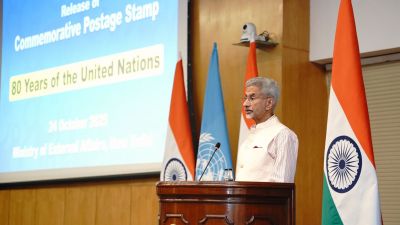After 2 years & billions in aid, tsunami scars remain
“This is it,” said Safrial, a carpenter, to his two young sons when a towering tsunami of black water rushed toward them two years ago. “This is the end of the world.”

“This is it,” said Safrial, a carpenter, to his two young sons when a towering tsunami of black water rushed toward them two years ago. “This is the end of the world.”
For most people who lived around him it was, and today Safrial (45), who uses only one name, hammers and sweats in the sun in a neighbourhood where he knows the names the dead more than those of the living.
He hammers constantly, even as he talks. “This was a test from God,” he said. “For those who died, it was disaster. But for the survivors, we must pass the test and become better people.”
The process of recovery has been a mixture of progress and disappointment. All across the ravaged cityscape, scraped bare by the waves, thousands of tiny, toy-box houses have sprung up in recent months as a programme of rebuilding gains momentum. But many new houses are empty because they lack water, sanitation and electricity and because there are no schools, clinics or commercial activity nearby. Many people whose homes they replaced were swept away to their deaths.
Old landmarks are gone and at night, the heart of the ruined area is almost as dark and silent as it was before construction started. This rebuilt city of ghosts seems like a ghost town.
The tsunami, caused by an earthquake off the shore of Aceh, took 230,000 lives and left nearly two million homeless in more than a dozen nations, including India, Sri Lanka, Thailand and Indonesia.
One of the worst natural disasters in modern history, it stirred an unparalleled outpouring of billions of dollars of aid.
But by some estimates, only one-third of the promised aid has been distributed to affected countries, and much of that has been lost to corruption, mismanagement, political squabbles and bureaucratic dead ends.
Hundreds of thousands of people still have no permanent homes or jobs, and it seems that many will live out their lives as refugees of the tsunami.
In India, the British aid group Oxfam estimates that 70 per cent of affected people still live in temporary shelters. In Sri Lanka, the revival of a civil war has made life even more precarious for survivors.
The beaches of Phuket in southern Thailand seem to be an exception, with life and tourism thriving again, though the scars of trauma remain. The last 451 unidentified bodies, of more than 5,000 who died, are being buried and their DNA is being kept on file.
Many of the problems of reconstruction are playing out here in Banda Aceh, where 170,000 people died and more than half a million lost their homes.
Hundreds of small earthquakes, as well as floods and landslides, have added to the misery since then. In recent days at least 70 people have been killed in the area by flash floods.
“We are overwhelmed by the massive task that is confronting us,” said the director of the Indonesian government’s reconstruction agency, Kuntoro Mangkusubroto at New York in November this year.





- 01
- 02
- 03
- 04
- 05


























